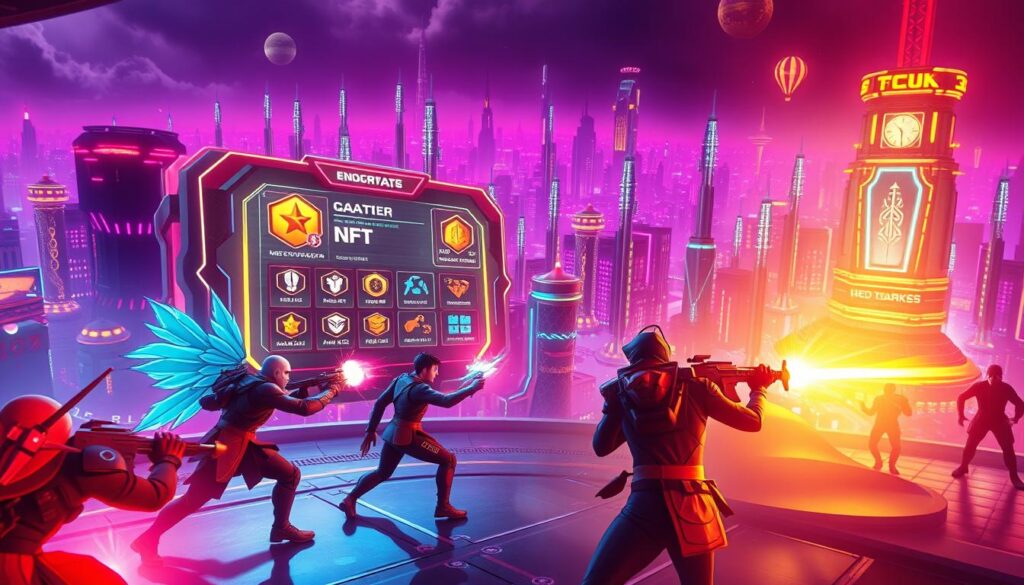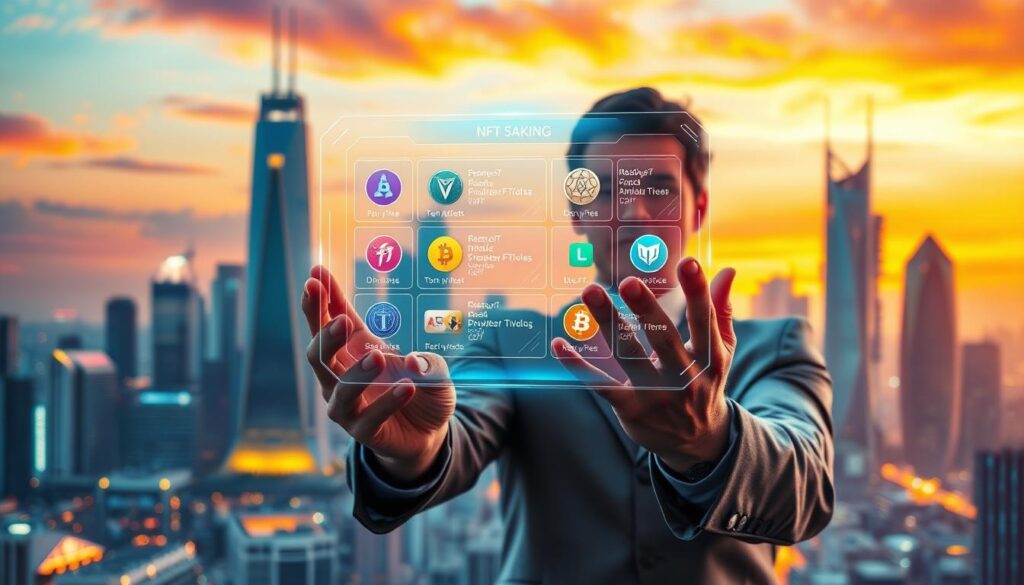Now Reading: Navigating NFT Copyright Laws: A Guide for Creators
- 01
Navigating NFT Copyright Laws: A Guide for Creators
Navigating NFT Copyright Laws: A Guide for Creators

Digital ownership has transformed how artists and collectors interact with creative work. Non-fungible tokens (NFTs) use blockchain technology to verify authenticity, but ownership of the token doesn’t automatically grant rights to the artwork itself. This distinction creates unique challenges for creators navigating legal frameworks designed for physical assets.

Many assume purchasing an NFT means owning the creative work behind it. In reality, copyright typically remains with the original artist unless explicitly transferred. This gap between perception and legal reality can lead to disputes over intellectual property in the digital space.
This guide breaks down how modern ownership models differ from traditional frameworks. We’ll explore strategies to protect your work while participating in blockchain-based markets. From licensing agreements to smart contract limitations, understanding these tools helps creators maintain control over their art.
Key Takeaways
- NFT ownership does not equal copyright ownership of the underlying artwork
- Artists retain creative rights unless legally transferred in writing
- Smart contracts automate transactions but don’t override existing laws
- Licensing agreements clarify usage permissions for buyers
- Global regulations vary, requiring tailored protection strategies
Understanding the Fundamentals of NFT Copyright Laws
Artists and innovators face new challenges in protecting their digital creations. While blockchain technology offers proof of authenticity, ownership of digital assets operates differently than physical property. This distinction becomes critical when creators engage with decentralized markets.

The Definition and Scope of Creative Control
Creative control grants makers exclusive authority over how their original works get used. This includes reproduction rights, public displays, and adaptations. These privileges apply automatically upon creation – no registration required in most countries.
Digital art and virtual collectibles fall under this protective umbrella. The tangible expression of ideas receives legal safeguards, not the concepts themselves. For example, a specific digital painting style gets protected, but not the general technique used to create it.
Why Ownership Rights Matter Online
Digital spaces make unauthorized copying effortless. A single artwork can spread globally within minutes. Clear ownership frameworks help creators:
- Prevent unauthorized commercial use
- Control derivative works
- Maintain attribution accuracy
Protection duration varies globally but typically lasts decades beyond the creator’s lifetime. This long-term security encourages innovation while balancing public access needs. Proper documentation remains essential when transferring specific privileges through licenses or sales.
Exploring the Nature of NFTs and Digital Art
Blockchain technology has introduced new ways to verify ownership in the digital realm. These systems enable creators to tokenize anything from music to virtual collectibles, creating a bridge between physical and digital value. At the core of this innovation lies a critical distinction: owning a token isn’t the same as owning the creative work it represents.

What Are NFTs?
Non-fungible tokens act as digital certificates powered by blockchain. Each token serves as proof of authenticity for a specific item, whether it’s a JPEG file or a 3D animation. Unlike physical art, these tokens don’t store the artwork itself. Instead, they point to metadata that identifies the creator and tracks ownership history through smart contracts.
NFTs Versus Traditional Art Ownership
When you buy a painting, you gain physical possession and display rights. With tokenized art, you acquire control over a blockchain entry linked to the work. Three key differences stand out:
- Exclusivity: Physical art ownership prevents others from displaying the original piece, while digital copies of tokenized works circulate freely
- Transfer Process: Traditional sales require paperwork; blockchain transactions update ownership records automatically
- Usage Rights: Holding a token might grant prestige but rarely includes permission to reproduce or profit from the artwork
The immutable nature of blockchain ensures permanent ownership tracking. However, artists maintain control over their creations unless licensing terms are explicitly included in smart contracts. This system reshapes how we define value in the digital age.
Insights into NFT Copyright Laws
The digital art market operates under established legal frameworks that many creators and collectors misunderstand. When selling tokenized items, the connection between ownership certificates and creative control requires careful navigation. Purchasers often confuse possession of a digital token with authority over the artwork itself – a misconception that leads to frequent disputes.
Key Legal Principles
Artists maintain control over their creations by default under existing regulations. Unless specific permissions appear in written agreements, buyers receive no reproduction or adaptation privileges. This principle stems from centuries-old protections for original works, now applied to modern digital formats.
Smart contracts automate sales but don’t alter foundational rules. They execute transactions while leaving creative authority untouched. Three critical concepts shape these interactions:
- Ownership records on blockchain don’t override intellectual property rights
- Transfer of privileges requires explicit written consent from makers
- Collectors bear responsibility to verify what permissions they acquire
Recent court decisions reinforce these standards. In one landmark case, a buyer unsuccessfully claimed merchandising rights to a digital character. The judge ruled the artist retained all commercial privileges absent a formal license.
Clear communication prevents most conflicts. Creators should detail permitted uses in sales listings, while collectors must review terms thoroughly. This mutual understanding fosters healthier marketplaces for digital art enthusiasts.
The Artistry of Minting: Copyright Considerations
Turning digital creations into unique assets requires both technical skill and legal awareness. The minting process serves as the bridge between an artist’s vision and blockchain verification. This critical step transforms creative output into traceable digital property while preserving creative control.

Minting Process and Its Legal Implications
Tokenizing your original work begins by uploading files to a marketplace platform. Each minted piece generates a blockchain certificate confirming authenticity. Three rules govern this process:
- Platform exclusivity: Most marketplaces forbid duplicate listings of identical artwork
- Ownership verification: Artists must prove rights to the work before tokenization
- Irreversible actions: Blockchain entries can’t be erased, making due diligence essential
Maintaining Originality and Avoiding Infringement
Creators should treat digital files like physical art when checking for originality. Even accidental similarities to existing works could lead to legal consequences. Follow these protective measures:
- Audit all visual elements for unauthorized copies
- Document creation timelines through dated files or sketches
- Use reverse image searches before minting
The tokenization process preserves commercial rights to physical prints and merchandise. However, unauthorized use of others’ material during minting constitutes copyright infringement. One misstep could permanently tarnish an artist’s reputation in digital markets.
Navigating Legal Frameworks: Copyright Transfer and Licensing
Legal agreements shape how creators share control of their work in digital markets. Two primary methods exist for transferring creative privileges: full assignments and limited licenses. Each approach impacts long-term revenue streams and creative freedom differently.
Assignment Versus Licensing Explained
Assignment means permanently transferring all rights to another party. This requires a written contract signed by both parties. Once completed, the original creator loses control over how the work gets used.
Licensing offers more flexibility. Artists can grant specific permissions while keeping ownership. There are two main types:
- Exclusive licenses: One party receives sole rights to use the work in agreed ways
- Nonexclusive licenses: Multiple parties can access similar privileges simultaneously
Smart Contract License Terms
Blockchain technology enables automated agreements through self-executing code. These digital contracts can:
- Define usage permissions in machine-readable terms
- Trigger payments when conditions get met
- Enforce expiration dates for temporary licenses
While convenient, smart contracts must align with existing legal standards. Written consent remains essential for exclusive arrangements with financial value. Creators should consult legal professionals to ensure terms comply with regional regulations.
Blockchain and Smart Contracts: The Backbone of NFT Ownership
Modern technology reshapes how we manage value in creative markets. Blockchain systems provide tamper-proof verification for unique items, while smart contracts automate ownership transfers. These tools work together to create trust in decentralized environments.
Understanding How Smart Contracts Work
Self-executing code eliminates middlemen by enforcing predefined rules. When conditions like payment verification occur, the contract automatically updates ownership records. This process ensures transparency, as shown in recent studies exploring cryptographic security methods.
Role of Blockchain in Securing Assets
The decentralized ledger creates permanent proof of ownership history. Each transaction gets added to an unchangeable chain, visible to all participants. Buyers receive cryptographic keys controlling access – not the asset itself – which prevents unauthorized duplication.
Innovative applications like tokenized loyalty programs demonstrate this system’s flexibility. Artists and collectors benefit from automated royalty payments and clear provenance tracking. As adoption grows, these technologies redefine what it means to truly own digital creations.
FAQ
What rights do creators retain when minting digital art?
Unless explicitly transferred through a written agreement or smart contract, creators typically retain intellectual property rights. Minting an asset on a blockchain doesn’t automatically grant buyers ownership of the underlying work.
How does owning a token differ from possessing traditional artwork?
Purchasing a token proves ownership of a unique blockchain entry linked to a digital file. Unlike physical art, buyers don’t inherently receive reproduction rights or commercial usage privileges unless specified in licenses.
Can someone replicate my work if it’s stored on a public ledger?
While blockchain records are immutable, the file itself (like JPEGs or GIFs) can still be copied. Legal protections depend on registration status and how licenses are structured to govern usage beyond the token’s sale.
What role do automated agreements play in managing permissions?
Smart contracts self-execute predefined terms, such as royalty distributions or usage restrictions. These digital tools help enforce creator stipulations without relying on intermediaries.
Are licenses necessary for limited-edition tokenized releases?
Clear licensing terms prevent disputes by outlining what buyers can do with the asset. For example, some artists allow personal display but prohibit merchandise production without additional consent.
What legal risks arise during the minting process?
Unintentional infringement occurs if creators use third-party content (like logos or music snippets) without authorization. Originality checks and due diligence minimize exposure to claims.
How does blockchain technology protect digital assets?
Decentralized ledgers provide tamper-proof records of transactions and ownership history. This transparency reduces fraud risks but doesn’t replace formal intellectual property registrations.













